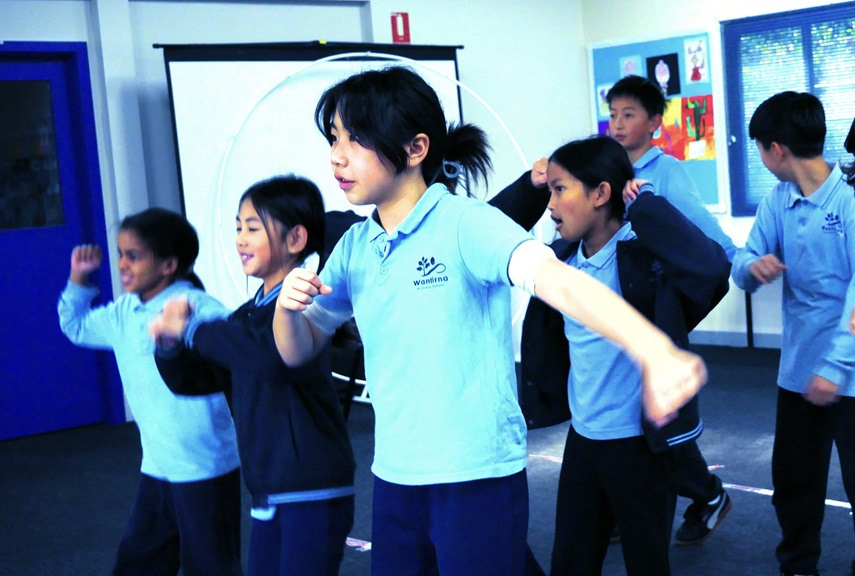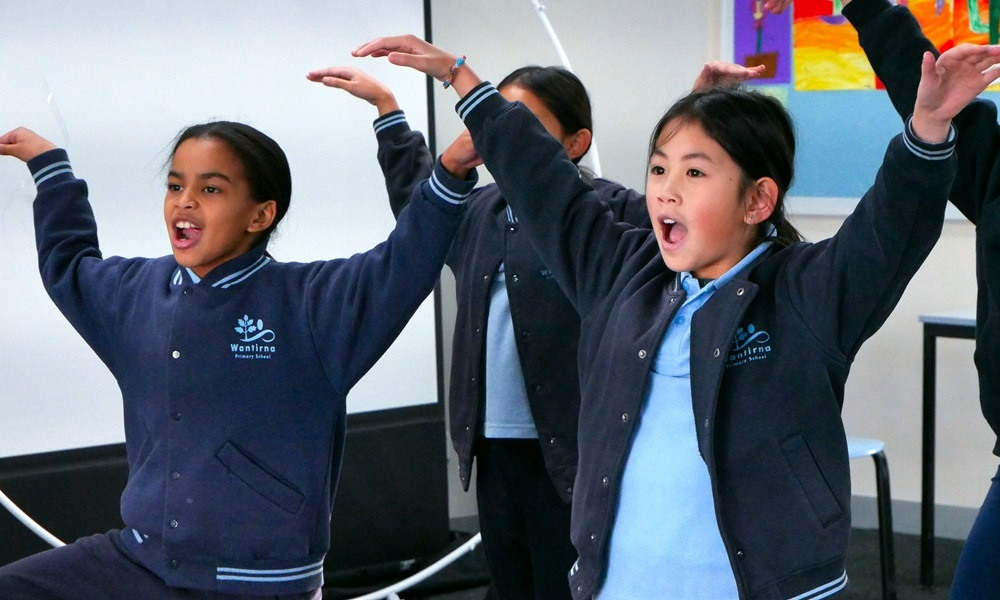In a time when students face complex challenges and teachers juggle competing demands, creative approaches to wellbeing are becoming vital. Arts learning in particular, offers a unique and powerful way to build connection, resilience, and confidence – benefiting both students and staff.
A school building wellbeing through the arts
While pressures on educators and students feel more intense than ever, one school in Victoria is creating positive wellbeing outcomes through rhythm and creativity. At Wantirna Primary School in Melbourne’s east, arts-based Social and Emotional Learning (SEL) has become a key part of the school’s wellbeing strategy. Through the Victorian Government’s Schools Mental Health Menu, the school has run two Social and Emotional Learning through the Arts programs with The Song Room, strengthening resilience and improving wellbeing for students and staff alike.
A program with purpose
The Song Room’s Social and Emotional Learning through the Arts program is a place-based, trauma-informed, and strengths-based program that uses the arts to explicitly teach social and emotional skills. Qualified teaching artists, including teachers, musicians, and play or art therapists, guide students while providing teachers with practical support and expert advice on delivering the arts curriculum.
You can feel the difference in the energy of the room after each session. The kids are lighter, more open. And the teachers? We’re breathing easier too. - Teacher, Wantirna Primary School
Boosting student confidence and connection
‘The children just love it. Having a teaching artist bring their expertise has been fantastic,’ says Wantirna Primary School Principal Amanda Breeden-Walton.
‘There’s excitement because it’s something truly tailored for them. The program has made a huge impact – engaging students in meaningful, creative learning. The experience has been both powerful and uplifting, boosting students' confidence and strengthening the sense of community.’
Students who were previously withdrawn or hesitant became more engaged, and the inclusive environment allowed those who did not usually experience success at school to shine.
We had a student who was very withdrawn, new to the school, a school refuser, and had additional needs. After this program, she’s so enthusiastic, animated, speaking to people she’d never normally speak to, and confident within herself. - Amanda Breeden-Walton, Principal
The collaborative nature of the sessions, whether working on a play or drumming ensemble, helped foster teamwork, inclusion, and a sense of belonging across year levels.

The positive ripple effect for teachers
Importantly, Wantirna Primary School saw benefits for staff wellbeing too. Many teachers, while understanding the value of creative learning, feel under-confident delivering the arts curriculum. Programs like these provide practical models and tips to help teachers integrate arts-based approaches into their classrooms.
Teachers described feeling re-energised and inspired. One teacher shared that the program reminded them of the power of the arts to engage every learner. Another reflected that they had gained simple ideas for using movement and music in class to build connection.
A year 3 teacher summed it up: ‘This program helped bring joy and play back into our day. It gave us new tools to support emotional regulation and create a positive classroom culture’.
Breeden-Walton says having the Teaching Artists come in has given her teachers a real boost. ‘The artists come in with that “oomph”. To have an expert come in and lead, giving teachers an opportunity to learn and observe is truly a gift,’ she says.
Why arts learning matters for wellbeing and growth
Arts learning offers far more than creative expression. It helps students build self-awareness and self-management, strengthening their ability to make responsible decisions and form positive relationships. Through shared artistic experiences, students develop greater social awareness, a stronger sense of belonging, and pride in their school community.
By encouraging students to find and use their creative voice they grow in confidence and motivation as learners. Importantly, arts learning experts can also help students to deepen their knowledge and skills in the arts in ways that align closely with the Victorian Curriculum, supporting academic outcomes.

Arts learning as a whole-school wellbeing strategy
‘For a small school like ours, it made a huge impact—engaging students in meaningful, creative learning and strengthening our sense of community,’ Breeden-Walton says.
Wantirna’s experience shows how sustained arts learning can be a powerful pillar in whole-school wellbeing strategies – building resilience, confidence and connection for students, while supporting staff in the process.
The programs at Wantirna have culminated in performances that brought together students, families, and staff, strengthening the school’s sense of community and shared purpose.
As one teacher put it: ‘We want more of this. More music, more confidence, more connection. Because when we look after our kids’ wellbeing – and our own – learning follows’.
Bring arts and wellbeing to your school
The Song Room’s Social and Emotional Learning through the Arts program is listed on the Victorian Schools Mental Health Menu, with funding available for Victorian Government primary schools through the Schools Mental Health Fund. It’s also featured in The Australian Council for Educational Research (ACER) Wellbeing Program Guide. If your school is interested in boosting student wellbeing through creative arts, get in touch to find out more about how to access this impactful program.
Find out how to get a Song Room arts and wellbeing program at your school at songroom.org.au.

